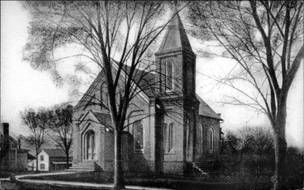This month a new Baptist church is formed on Sand Mountain in Jackson County in north Alabama. The former Sand Mountain mission, an “arm” of nearby Friendship Baptist Church, formally becomes a church. Taking the name of Mount Pisgah Missionary Baptist Church of Christ, the new church is constituted with the help of “a number of prominent preachers of the Association including Richard H. Taliaferro from Paint Rock Valley, Bailey Bruce from Friendship Church, Charles L. Roach Sr. missionary, and William Raper of Bootsville Church in Dekalb.”
The timing of the formation of the church is unfortunate. With the Civil War already raging, the little congregation of twenty-five initial members barely survives. The young men serve in the Confederate army, leaving the older male members to carry on church affairs. Church families live in poverty, struggling for mere survival. Meetings are infrequent and irregular during the war years and afterward, and the church does not have a regular pastor until 1872. At some point during this time, the word “Mount” is dropped from the church name.
The Civil War-era sufferings of the Mount Pisgah congregation are similar to those of other Alabama Baptists in the area. The Friendship Baptist Church is occupied by Federal Troops stationed at nearby Stevenson, and church meetings are held irregularly during the war years. Meanwhile, the Tennessee River Association suspends meetings from 1861 through 1865, due to the difficulties of the war.
Further northward in North Carolina, the First Baptist Church of Hillsborough this month, in the midst of constructing a sanctuary, votes “to have a lighting rod put upon the tower of the new church and to mend the old fence on the property ‘to keep stock out.'” The war years bring a halt to construction of the sanctuary, and members meet in the basement. Sometime in 1862 the congregation votes “to give our church bell to the Orange Light Artillery of the purpose of being cast into cannon for use of the Confederate States Army.”
Throughout the South, the story of Baptists is similar to those retold above: the war years alter congregational and associational life, bringing church meetings to a halt in many cases, while families struggle to survive.
Sources: Emmett B. Wheeler and Richard L. Wheeler, “History of Pisgah Baptist Church: 1851-1973” (link); Miriam Allred and Reggie Carter, “History of First Baptist Church [of Hillsborough] (link)



